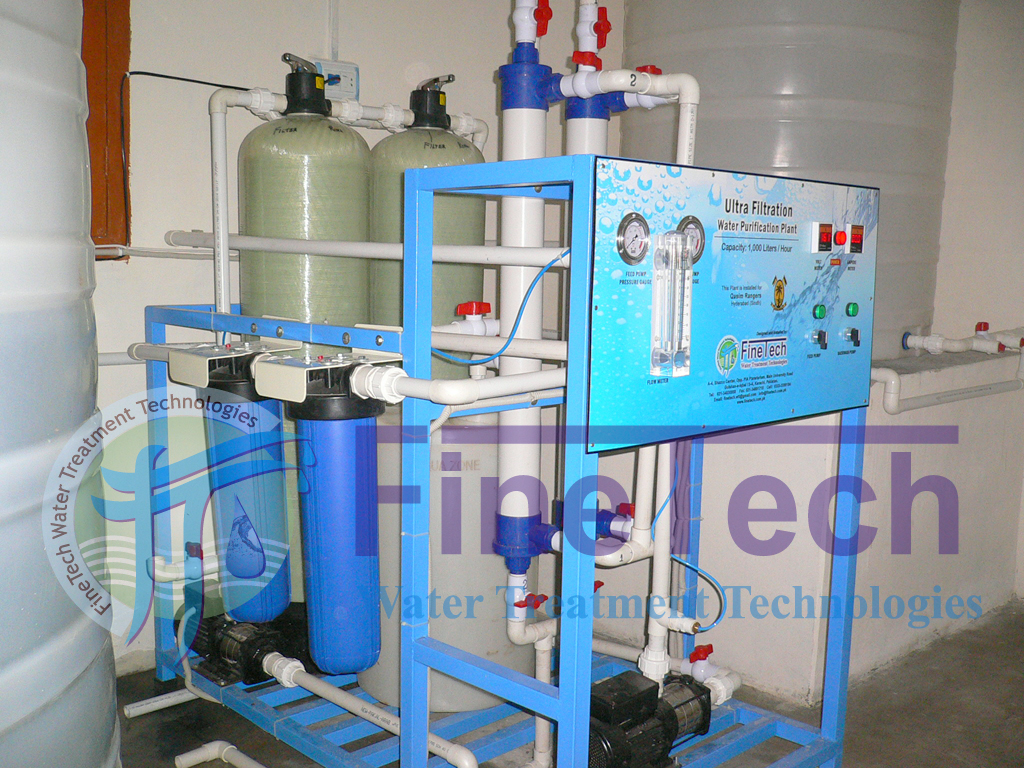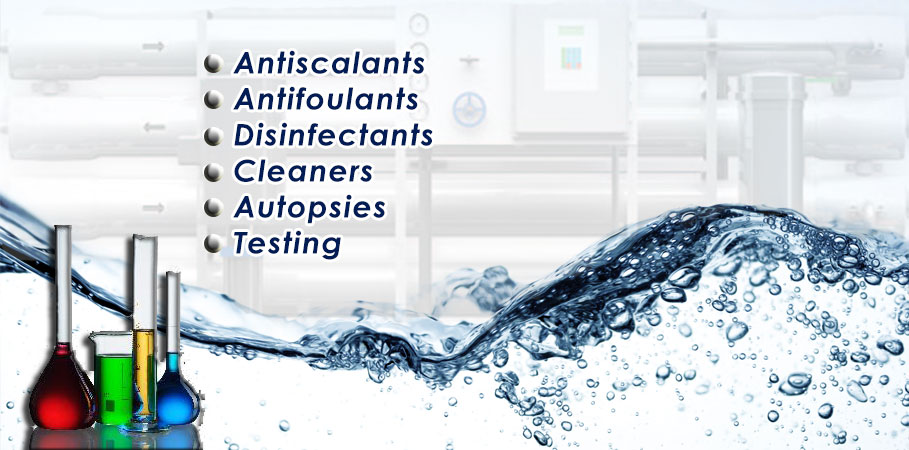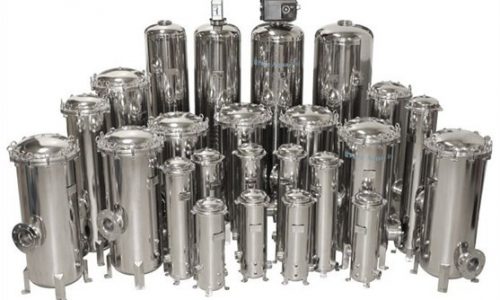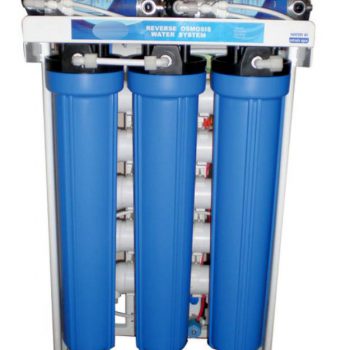Category: Uncategorized
Membrane Cleaning Chemicals
RO Membrane cleaning chemicals are an important part of any reverse osmosis, nano-filtration, ultra-filtration, or micro-filtration maintenance program. For membrane cleaning, acid- and alkali-based cleaning chemicals are designed to remove most foulants and restore performance in all types of membrane systems. Products have been formulated and tested in numerous RO operating systems around the world.
Reverse osmosis (RO) anti-scalants and reverse osmosis cleaning chemicals are used as a purification technology that uses a semipermeable membrane. This membrane-technology is not properly a filtration method. In RO, an applied pressure is used to overcome osmotic pressure, a colligative property, that is driven by chemical potential, a thermodynamic parameter. RO can remove many types of molecules and ions from solutions and is used in both industrial processes and to produce potable water. The result is that the solute is retained on the pressurized side of the membrane and the pure solvent is allowed to pass to the other side. To be “selective,” this membrane should not allow large molecules or ions through the pores (holes), but should allow smaller components of the solution (such as the solvent) to pass freely.
In the normal osmosis process, the solvent naturally moves from an area of low solute concentration (High Water Potential), through a membrane, to an area of high solute concentration (Low Water Potential). The movement of a pure solvent is driven to reduce the free energy of the system by equalizing solute concentrations on each side of a membrane, generating osmotic pressure.
The process is similar to other membrane technology applications. However, there are key differences between reverse osmosis and filtration. The predominant removal mechanism in membrane filtration is straining, or size exclusion, so the process can theoretically achieve perfect exclusion of particles regardless of operational parameters such as influent pressure and concentration. Moreover,reverse osmosis involves a diffusive mechanism so that separation efficiency is dependent on solute concentration, pressure, and water flux rate.
RO Pressure Vessels
RO Membranes
Filtration Media
An important component of any filtration system is the physical or chemical material designed to separate suspended solids and particulate matter from the water supply and allowing the water to pass through. Materials used in filtration are generally referred to as filtration media and come in a wide array of materials and sizes. Certain materials are better suited in the removal of specific types of solids, thus most filter media beds are a combination of different materials including filter sand, gravel, anthracite, green sand, garnet, and activated carbon.
All Water Systems stocks a complete assortment of water filtration media to meet our clients’ needs and uses our 30 plus years in business to select the right type of water filtration media as well as how much and how often the media should be replaced. We take the time to fully understand your water usage and requirements in order to provide an exceptional level of service from media replacement to fully servicing or monitoring your water filtration systems.

Water Filtration Media
| Activated Carbon | This is a highly effective in the reduction of undesirable tastes and odors associated with chlorinated water supplies. They include water filters for removing chlorine and organic contaminants from water used in commercial and industrial applications. |
| Anthracite | Promotes higher service flow rates and longer filter runs with less head loss than single media filter beds. Backwash rates are reduced as well. Low uniformity coefficient anthracite filter media extends the life of your filter before the media must be changed out. |
| Calcite | Acidic waters will slowly dissolve the calcium carbonates to raise the pH which reduces the potential of copper, lead and other metals found in water filtration systems. |
| Garnet | Almandite garnet is a high hardness, high density granular filter media. It can be used extremely effectively as the lower strata in a dual media filter bed. Its high specific gravity as well as its chemical and abrasive resistance makes garnet ideal for filtration media. |
| Zeolite | This material offers a high surface charge density and high cation exchange capacity. Because it can bind to so many materials it is often used as water filtration media for a variety of applications and industries. |
| Resin | This high capacity, high quality gel-type cation resin is capable of meeting the most exacting requirements of commercial, institutional and industrial water softeners. It is supplied in sodium form as colored translucent beads and does not contain chlorinated solvents. The manufacturing process insures low taste, odor and color throw for potable waters. |
Cartridge Filters & Housings
FineTech Water Treatment Technologies offers a complete range of cartridge filtration products designed to meet the needs of highest purity applications. From sediment removal filters for the pretreatment of RO systems or validated submicron filtration water used to manufacture quality water, FineTech Water Treatment Technologies is your one stop source for all your filtration needs.
Carbon Filtration Systems
Containerized Ultra Filtration
FineTech offers small and medium size Containerized Reverse Osmosis and Ultra Filtration Plants enclosed in transportable containers. Container can be kept in ‘Lock and Key’ to avoid tampering by unauthorized persons. All components are protected from weather. These Containerized RO & UF Plants can be transported from one place to another, in case permanent establishment is not possible.
Features of Containerized RO & UF Plant:
- Compact in structure, these plants are portable in size, superior in aesthetics and weather protected.
Applications of Containerized RO & UF Plant:
- The quality containerized Reverse Osmosis and Ultra Filtration plants offered by us are used in various applications such as defense establishments, calamity affected areas, rural areas for community drinking water supply and construction sites.
Domestic RO Plants
Keeping the growing health concerns because of the contaminated water, ‘FineTech Water Treatment has developed an advanced Domestic RO Plant. The Domestic RO Water Plant is equipped with latest technology and world class spares which treat water and makes it drinkable. The unbeatable features like auto-shut off button and five stage filtration process of our plant has made us one of the apex Domestic Reverse Osmosis Plant providers, based in Pakistan.
This RO system is designed under the guidance of experts and provides a completely bacteria free safe water. This system can be installed in offices, homes, food corners, educational institutes and hospitals with great ease. This is ideal for installation under kitchen counter with the focus mounted on sink. Perfect for water coolers too. The RO system is not only superior in quality and durable but can easily be customized according to the client’s requirements and industrial needs.
Features
- 100% Leak Proof “IMPORTED” Filter
- Auto Flushing
- Auto Shut Down
- 5 Stage Filtration Process
- Best Solution for Domestic Water Purification
Technical Specifications:
- Model : FT-RO-5
- 12 – 15 Liter/Hour Output Capacity
- Filtration Stages : Five to Six
- Capacity: 50, 70, 75 & 100 GPD
- First Stage: 5-micron spun polypropylene yarn cartridge
- Second Stage: CTO Cartridge
- Third Stage: 1-mic spun polypropylene yarn cartridge
- Fourth stage: RO Membrane (50, 70, 75 & 100 GPD) Equivalent to USA
- Five Stage: In- Line Post carbon cartridge
- Sixth Stage: UV Sterilizer (Optional)
system includes: Booster Pump with transformer
Auto shut off system
Auto membrane flush system
3.8 gallons water storage tank
Standard Faucet
Installation Hardware
Make: Taiwan & China
How Reverse Osmosis does differ from an ordinary Water Filter?
Ordinary water filters use a screen to separate only particles of dirt sediment from water. Reverse osmosis employs a semi permeable membrane that removes not only particles but also an extremely high percentage of dissolved contaminants-molecule by molecule-from raw tap water.
Ultra Filtration
Ultra-Filtration (UF) is a kind of membrane filtration method. It is a filtration process which utilizes trans-membrane pressure differential to separate particles according to molecular weights.
By using hollow fibers UF membrane as filtration media, raw water particles which are smaller than “pore” of UF membrane will permeate through and collected as permeate; whilst, particles which are larger than UF membrane pore size will be separated as concentrate under certain pressure applied.
UF membrane is an asymmetric semi-permeable membrane made of high molecular material by special technology. Its’ hollow fiber tube cover densely by micro-pores which allow solution flowing in or out the membraneunder the influence of pressure. UF membrane pore size range from 0.1 to 0.005 μm or molecular weight (200,000 to 10,000 Daltons) for different applications.
Generally, it is used to remove high molecular-weight substances, colloidal materials, bacteria, organic and inorganic polymeric molecules.
UF system requires ONLY 20% energy consumption of reverse osmosis system. Low operating pressures are sufficient to achieve high flux rates from UF membrane.
It has outstanding advantages as followings:
- Minimum pumping energy required, thus energy saving
- Chemical resistance, wide PH range
- Back-washable
- Easy to operate & maintenance
- Low investment cost
- No phase change
- No contaminant residue caused by chemical reaction
- Recovery ratio up to 98%
UF had been wide applied in industries such as:
1. Surface Water Clarification
2. RO Pre-Treatment
3. Waste Water Treatment

Ultra filtration (UF) is a separation process by using membranes with pore sizes in the range of 0.1 to 0.001 micron. Typically, ultra filtration will remove high molecular-weight substances, colloidal materials, and organic and inorganic polymeric molecules. Low molecular-weight organics and ions such as sodium, calcium, magnesium chloride, and sulfate are not removed. Because only high-molecular weight species are removed, the osmotic pressure differential across the membrane surface is negligible. Low applied pressures are therefore sufficient to achieve high flux rates from an ultra filtration membrane.
Ultrafilter vs Conventional Filter
Ultra filtration, like reverse osmosis, is a cross-flow separation process. Here liquid stream feed flows tangentially along the membrane surface, thereby producing two streams. The stream of liquid that comes through the membrane is called permeate. The type and amount of species left in th e permeate will depend on the characteristics of the membrane, operating conditions, and quality of feed water. The other liquid stream is called concentrate and gets progressively concentrated in those species removed by the membrane. In cross-flow separation, therefore, the membrane itself does not act as a collector of ions, molecules, or colloids but merely as a barrier to these species.
Conventional filters such as media filters or cartridge filters, on the other hand, only remove suspended solids by trapping these in the pores of the filter-media. These filters therefore act as depositories of suspended solids and have to be cleaned or replaced frequently. Conventional filters are used upstream from the membrane system to remove relatively large suspended solids and to let the membrane do the job of removing fine particles and dissolved solids. In ultra filtration, for many applications, no pre-filters are used and ultra filtration could remove almost all of the suspended and emulsified materials.
Ultrafiltration Membranes
Ultra filtration Membrane modules come in capillary and spiral-wound configurations. All configurations have been used successfully in different process applications. Each configuration is specially suited for some specific applications and there are many applications where more than one configuration is appropriate. For high purity water, spiral-wound and capillary configurations are generally used. The configuration selected depends on the type and concentration of colloidal material or emulsion. In all configurations the optimum system design must take into consideration the flow velocity, pressure drop, power consumption, membrane fouling and module cost.
Membrane Materials
A variety of materials have been used for commercial ultra filtration membranes, but poly sulfone (PS), PAN, PP and PVC are the most common. Recently thin-film composite ultra filtration membranes have been marketed. For high purity water applications the membrane module materials must be compatible with chemicals such as hydrogen peroxide used in sanitizing the membranes on a periodic basis.
Molecular-Weight Cutoff
Pore sizes for ultra filtration membranes range between 0.001 and 0.1 micron. However, it is more customary to categorize membranes by molecular-weight cutoff. For instance, a membrane that removes dissolved solids with molecular weights of 10,000 and higher has a molecular weight cutoff of 10,000. Obviously, different membranes even with the same molecular-weight cutoff will have different pore size distribution. In other words, different membranes may remove species of different molecular weights to different degrees. Nevertheless, molecular-weight cutoff serves as a useful guide when selecting a membrane for a particular application.
Factors Affecting the Performance of Ultrafiltration
There are several factors that can affect the performance of an ultra-filtration system. A brief discussion of these is given here.
Flow Across the Membrane Surface. The permeate rate increases with the flow velocity of the liquid across the membrane surface. Flow velocity is critical especially for liquids containing emulsions or suspensions. Higher flow also means higher energy consumption and larger pumps. Increasing the flow velocity also reduces the fouling of the membrane surface. Generally, an optimum flow velocity is achieve by compromise between pump horsepower and permeate rate.
Operating Pressure. Permeate rate is directly proportional to the applied pressure across the membrane surface. However, due to increased fouling and compaction, the operating pressures rarely exceed 100 psig and are generally around 50 psig. In some of the capillary-type ultra filtration membrane modules the operating pressures are even lower due to the physical strength limitation imposed by the membrane module.
Operating Temperature
Permeate rates increase with increasing temperature. However, temperature generally is not a controlled variable. It is important to know the effect of temperature on membrane flux in order to distinguish between a drop in permeate due to a drop in temperature and the effect of other parameters.
Operating Pressure
Permeate rate is directly proportional to the applied pressure across the membrane surface. However, due to increased fouling and compaction, the operating pressures rarely exceed 100 psig and are generally around 50 psig. In some of the capillary-type ultra filtration membrane modules the operating pressures are even lower due to the physical strength limitation imposed by the membrane module.
Operating Temperature
Permeate rates increase with increasing temperature. However, temperature generally is not a controlled variable. It is important to know the effect of temperature on membrane flux in order to distinguish between a drop in permeate due to a drop in temperature and the effect of other parameters.
Performance of Ultrafiltration Systems
In high purity water systems, ultrafiltration is slowly replacing the traditional 0.2-micron cartridge filters. In Japan, practically all of the semiconductor industry follows this practice. An ultrafiltration membrane with a molecular-weight cutoff of 10,000 has a nominal pore size of 0.003 micron. When an ultrafiltration membrane is used instead of a 0.2-micron cartridge filter, particle removal efficiency is greatly improved. In addition, ultrafiltration membranes are not susceptible to the problem of bacteria growing through them, as is the case with 0.2-micron filters.
As the requirements for the quality of high purity water become more stringent, we can expect to see an increasing use of ultra fltration as a final filter.










